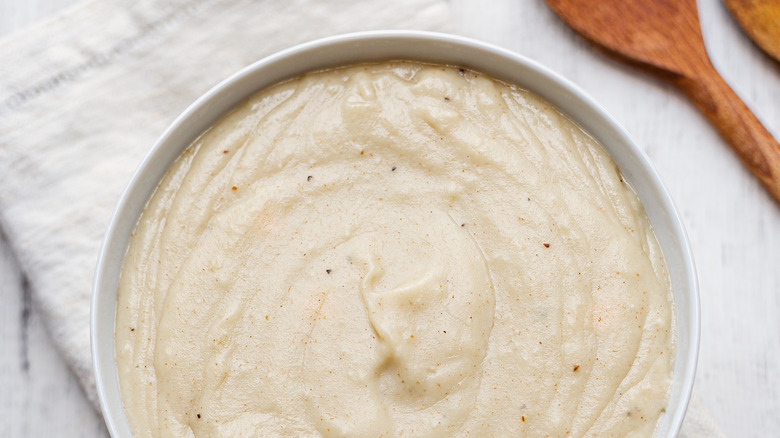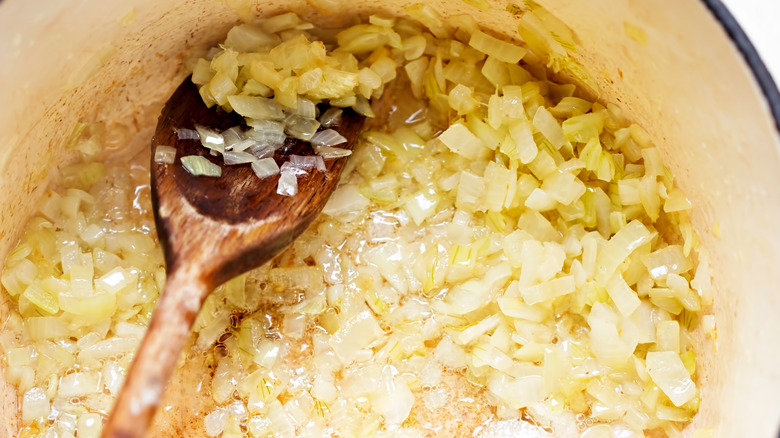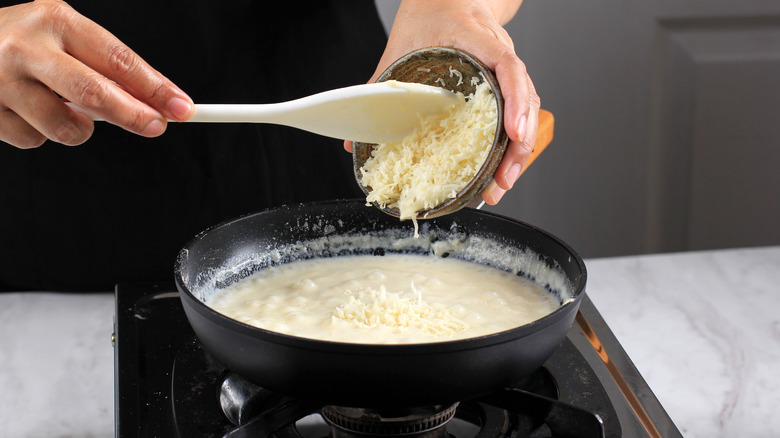What Is Soubise Sauce, And What Does It Taste Like?
Classical French cuisine is responsible for so many of the culinary techniques and foundational dishes that inform how we cook today, often in ways we don't even realize — from cooking methods like flambéing and sautéing, to the process of "mise en place," which is essential for any chef.
One of the most important fundamental elements of French cuisine is knowing how to make what's referred to as the "mother sauces." Four base sauces were originally put forward by French chef Marie-Antoine Carême in his 19th century reference cookbook, which were later altered and added to by the famous Auguste Escoffier to create the five mother sauces we know today: béchamel, velouté, espagnole, sauce tomate, and hollandaise.
These are considered the five foundational French sauces from which all other sauces are derived. Including, you guessed it, soubise sauce. So let's find out how this French sauce is made, what it tastes like, and why you should give it a try.
Soubise sauce = French onion sauce
To understand what soubise sauce is, you need to understand its mother sauce: béchamel. In its classic form, béchamel is simply a mixture of roux (aka, cooked flour and fat) and dairy. To make it, you typically heat butter and then add flour and mix together until they form a thick and clumpy roux; then you add heated milk and stir and cook everything together (low and slow). This makes a rich, creamy white sauce that's traditionally served with meats, fish, and eggs, and you'll know it well from dishes like scalloped potatoes and lasagna.
Soubise sauce is a derivative or variation of this mother sauce; it's essentially a béchamel sauce mixed with sautéed onions. Think of the famously delicious French onion soup, but in sauce form. Like béchamel, soubise is rich and velvety, but the buttery onions add an extra layer of dimension and just a hint of that caramelized flavor.
To make soubise sauce, you simply sautée onions in butter until they're soft and cooked through, but not browned (some recipes call for blanching the onions beforehand to prevent caramelization). Then you purée the cooked onions, whisk in your béchamel sauce, and bring to a simmer. Season with some salt and pepper to taste, and that's all there is to it!
How to spice up your soubise sauce
While a soubise sauce is rich and satisfying on its own, there are many variations you can experiment with to change up its texture or add more layers of flavor.
For example, rather than make a béchamel with butter, flour, and milk, you can simply replace the béchamel sauce with cream, or even a mixture of cream and stock, to produce an overall lighter consistency. Alternatively, if you want something with a heavier texture you could whisk in grated or shredded cheese while the sauce finishes cooking for an extra savory touch. Julia Child's version of soubise calls for rice with heavy cream and Gruyère cheese, which can take on a casserole form or be puréed into a thick-textured sauce.
You can also add tomato purée to your soubise sauce to create more of a creamy, flavorful tomato sauce that can be used on pasta or to compliment cooked meats and vegetables. And don't be afraid to experiment with different spices — from curry powder to nutmeg to cayenne pepper — to add levels of sweet or heat to your sauce.


